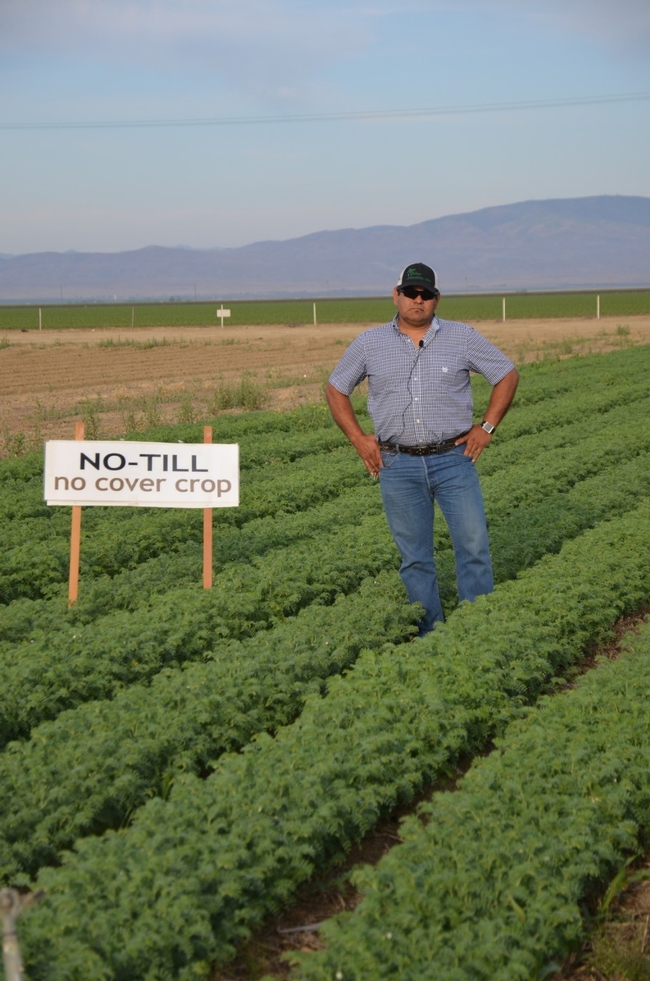Since the advent of irrigation in California with the widespread drilling of wells in the 1930s and the proliferation of orchard crops during the past two decades, total annual water use in many watersheds exceeds supply. Partly as a consequence, California enacted the Sustainable Groundwater Management Act in 2014, which limits withdrawals to replenished levels.
Because irrigated agriculture accounts for nearly 80% of total water use, reductions in irrigation will be required, but preferably without decreasing either productivity or food supply. Furthermore, with some climate change projections suggesting a potential 20% water loss by the middle of the century, the need for more efficient water use could become acute. Fortunately, some water-saving methods such as drip irrigation have been supported by the government and there have been programs that have increased implementation and farmers understand these methods well.
Reduced disturbance tillage, or no-till, however, also offers an under-utilized strategy for increasing agricultural water use efficiency in California. There has been very little research and there is very little information available to farmers on no-till production systems for the diverse array of crops that have been produced in the state historically.
UC Cooperative Extension cropping systems specialist Jeff Mitchell led a diverse team of ANR, farmer, private sector and other public agency partners to evaluate the potential for producing sorghum and garbanzos, using high residue, no-till techniques in the San Joaquin Valley in a four-year study conducted at ANR's ag experiment station in Five Points, Calif.
Standard tillage practices have been used throughout the region for nearly 90 years. Using similar inputs and amounts and pest management, they showed that a garbanzo and sorghum rotation in no-till yielded at least as well as in standard tillage.
Sorghum yields were similar in no-till and standard tillage systems while garbanzo yields matched or exceeded no-till than in standard tillage, depending on the year.
In the trial, no-till garbanzos yielded an average of 3,417 pounds per acre versus standard tillage with an average of 2,738 pounds per acre; garbanzo production in California, which is almost all in standard till, averages 2,300 pounds per acre.
We envision that if water costs continue to rise and as curtailments on water supply increase, the value of agricultural land in California will eventually decline, providing more of an economic incentive for using no-till for growing a portfolio of crops, such as sorghum and garbanzo, amenable to these pending constraints on irrigation.
In addition, there already exists high acreage of relatively low-value field crops in the state. As annual row crop farmers are faced with the need to reduce water use, knowing which field crops perform well in no-tillage conditions is important for the region. For this reason, this work may serve as a decision-making tool for growers in the future, especially if there is the opportunity to both reduce management costs and maintain yields
An outgrowth of this work on no-till systems is the group of about 15 farmers who're now a part of a USDA NRCS Conservation Innovation Grant Program project that is looking at opportunities and approaches for reducing disturbance in organic vegetable production systems.
